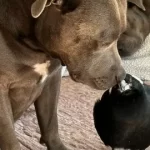From 1970, there is the annual celebration of Earth Day. April 22 is the day of supporting and protecting the environment with a unique theme every year. This year, on the 50th anniversary the theme of the Earth Day is the Climate Action. So, Google Doodle is celebrating the day with a bees game and some tips to teach us how to protect bees.
Today, Google Doodle released a game in cooperation with The Honeybee Conservancy, in which you have to guide the bee to flowers, besides teaching us some information about bees and their great influence to our dear planet Earth.
The first thing you see is Google Doodle says about Earth Day: “Happy 50th Anniversary of Earth Day! Today we celebrate our planet and one of its smallest, most critical organisms, the bee! Did you know? Pollination by bees makes two-thirds of the world’s crops possible, as well as 85 percent of the world’s flowering plants.”
Guillermo Fernandez The founder and director of The Honeybee Conservancy clarified what he was thinking about behind the project of Earth Day in Google Doodle, and also gave information about how we can help bees while in social distance.
Fernandez stated he established The Honeybee Conservancy because he, “wanted to help save the bees, who pollinate 1 in 3 bites of food we eat and are vital to [a] healthy ecology. There are 20,000 species of bees around the world who do this essential work.
“In North America, currently 1 in 4 of the 4,000 native bee species are at risk of extinction. On a larger scale, the world’s survival depends on theirs.”
Moreover, Fernandez wished to serve communities like which grew up in giving honeybee hives and native bee homes to institutions such as gardens and schools.
Fernandez stated: “I immigrated to the U.S. from Cuba at the age of one. The neighborhood I grew up in was a crowded, urban area where one-third of the multi-ethnic community lived in poverty. Finding fresh fruit or vegetables to eat was next to impossible: the nearest supermarket mostly stocked processed foods, and our local restaurants were all fast-food chains. There wasn’t a tree or garden in sight; the only park was full of concrete.”





